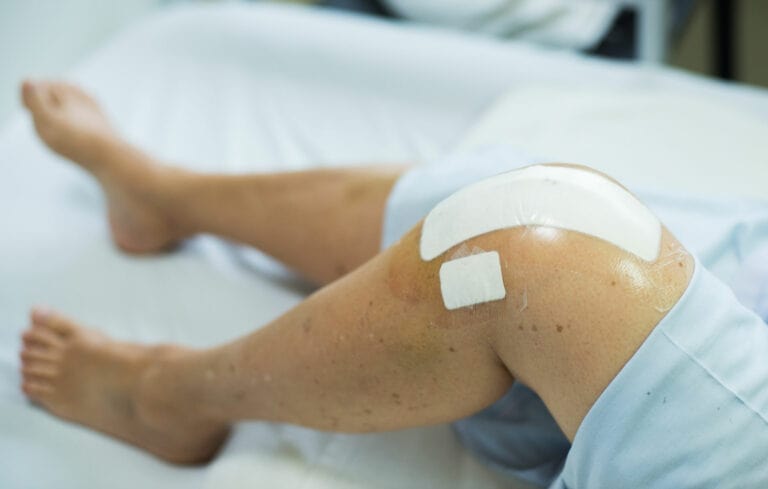Total Knee Replacement: High-Tech Surgery
A Joint Damaged by Osteoarthritis
Osteoarthritis of the knee is a degenerative pathological condition affecting the knee cartilage.
A typical phenomenon of old age, it can cause painful symptoms that prevent the performance of the simplest daily activities.
The knee is the articular complex connecting the femur, tibia, and patella.
This joint allows flexion and extension movements, enabling walking, sitting, climbing, and descending stairs.
Therefore, the pain and limited knee movement caused by osteoarthritis significantly impact the quality of life of those affected.
It's the most widespread joint disease globally, more frequent in women and people over 60 (primary gonarthrosis).
Other pathologies can lead to early-onset osteoarthritis (secondary gonarthrosis), including:
- Previous serious trauma, such as a fracture of the tibia, fibula, or femur;
- Misalignment of anatomical structures (varus or valgus knee);
- Repeated minor traumas, such as in weightlifting;
- Systemic or metabolic diseases;
Initially, pain occurs only after prolonged or strenuous exertion, subsiding after rest.
However, it gradually manifests even after lighter exertion, becoming constant and increasing in intensity.
In advanced stages, the joint stiffens, severely limiting flexion and extension, impacting mobility.
Osteoarthritis's degenerative nature makes it irreversible, highlighting the importance of preventive measures.
It's recommended to:
- Maintain an appropriate level of physical activity;
- Avoid excessive weight gain or lose weight;
Thirty minutes of daily activity is generally beneficial. Regular exercise offers pain control similar to NSAIDs.

Computer-Assisted Cutting-Edge Surgery
Computer-assisted surgery, or robotic surgery for knee replacement (partial and total), uses cutting-edge technology to support the surgeon during prosthesis placement.
The surgeon creates a 3D electronic knee model from a pre-operative scan. This model, and sensor data from the joint during surgery, guides precise surgical instructions for optimal prosthesis placement and balance. The robotic arm creates the bone cavity with maximum precision.
The prosthesis offers several advantages. Robotic precision ensures successful surgery. Computer-assisted surgery preserves healthy bone and soft tissues due to minimal trauma.
Patients recover faster than with conventional techniques. The minimally invasive nature often eliminates the need for a tourniquet, improving circulation and reducing post-operative pain, especially beneficial for patients with arterial or venous limb diseases.
Patients often walk within 24 hours without analgesics. Return to work and social life occurs within weeks. In about 70%, rehabilitation hospital stays are unnecessary; a post-operative exercise program suffices, continued at home. Crutches are typically needed only in the first few days.
Total knee replacement benefits from less invasiveness, perfect ligamentous balance, precision, and reproducibility. The robotic technique allows a return to sporting activity, though with limitations.
EXPRESS QUOTE
You would like more information
Your health, our priority.
Request your free quote
A Trial Prosthesis Before the Final One
A skin incision (12-15cm) is made at the knee's anterior region, centered on the patella. Surgical access to the joint is achieved layer by layer. The surgeon performs osteotomy of the upper tibia, dissecting minimally. The prosthesis covers the articular surfaces. Femoral component osteotomy is performed in several planes. Ligamentous balance in knee extension and flexion is verified. Prosthesis components are positioned, and function is verified via static and dynamic tests. Only if perfect functional and biomechanical results are obtained are the test components removed, and the final prosthesis implanted. Further stability tests and deformity correction are performed.